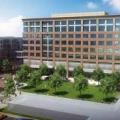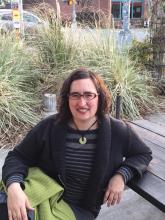{Cross posted from the Chapel Hill News}

A picture of a stop sign graffitied to read “STOP PROGRESS” appeared on Twitter last week. The person who Tweeted it captioned it simply: “Chapel Hill politics in a nutshell.”
A few days later, a community leader expressed to one of us their disappointment in how our community is perceived. “People used to look to us as a leader in innovative policies, a place where cool things were happening. That doesn’t happen anymore.”
How we got to this point is no mystery. Past local elected officials enacted policies that made it difficult to open new businesses and build new kinds of housing. As a result, most development of the past few decades has been low-density, single-family homes on dead-end streets.
This particular style of development has meant less space in our community for innovative businesspeople and cutting-edge artists and musicians. Worse, it has also decreased our sense of community, reduced our tolerance for diverse ideas, and eroded our willingness to embrace change as necessary and good.
These past policies have meant that we’ve built our community out in a form that promotes isolation, eliminates physical and social connections, and creates community distrust. So, it’s no surprise, then, that our community is being looked to less and less as a beacon of progress and a laboratory for innovative ideas for strong communities.
This isn’t unique to Chapel Hill. Robert Putnam’s bestselling book “Bowling Alone” chronicled the decline of social capital in the United States in the modern era. Putnam uses a number of indicators to show how disconnected we’ve become from friends, family, and community.
It’s not coincidental that the trends Putnam observes have occurred in tandem with the spread of suburban sprawl. City Observatory, a Portland-based think tank, released a report last year (http://cityobservatory.org/less-in-common/) detailing just how the decline of social capital is closely intertwined with suburban-style planning and how it has ripped apart community fabric by eliminating the spontaneous encounters and vibrant street life that defines and creates community characterized by dense, walkable development. Atlanta-based urban designer Ryan Gravel has a new book out, Where We Want to Live, also on this very subject (http://bit.ly/222sOdL).
What all of this tells us is that if we want to reclaim our image as a leading progressive community in North Carolina, we need to be the inverse of what we are now. We need to be a community where it’s easy to do business, where there are plentiful and varied housing options, and where we welcome new, experimental ideas and change instead of freezing in fear when new ideas are introduced.
The policy tools exist for us to reclaim our progressive title. Instead of regulating progress out of existence, we could remove layers of zoning regulations, eliminate or streamline permitting requirements to speed up approvals, rezone areas of town to encourage denser styles of housing, and implement form-based code in more areas of town to encourage and incentivize the urban-form development of the future.
Yet, we keep seeing more of the same outdated approaches to planning. For example, take a look at recently approved developments on Homestead Road. None are within walking distance of basic services and amenities, nor do these developments allow easy access to our fare-free bus system. Instead, these developments require the use of a car and isolate residents in their private homes.
Contrast this with the currently under construction Shelton Station in Carrboro. Located downtown on North Greensboro Street, its residents will have easy access to one of the most vibrant parts of our community. Yet, one-off developments like this aren’t enough. We need to make it systematically easier to build the types of developments that encourage a sense of community and simultaneously make it harder to continue to build isolating suburban sprawl.
Progressive land use and urban policy isn’t just a choice our community could make. It’s an imperative if we truly care about the social values we’re known for supporting at the state and national levels. Land-use regulations have enormous implications on affordability, diversity, and inclusion. It isn’t just federal or state regulations and policies that touch these issues. Demonstrating our commitment to these values at the local level requires real policy action, not just symbolic resolutions passed by our governing boards on the issues that lie outside of their jurisdiction.
“Quality of life” is a common phrase in conversations about city planning and our future. But so often we frame it wrong. We frame it around minor details that impact individual lives instead of broadly thinking about our entire community’s quality of life. A higher quality of life isn’t spending 30 fewer seconds stuck in traffic. A higher quality of life happens when a community is designed so you don’t need a car to get where you want and need to be. A higher quality of life is one where our movements from place to place bring us into contact with other people so we can form meaningful community connections.
Let’s live our values instead of contradicting them. Let’s embrace new ideas, change and policy experimentation. Our entire community will be better off for it.


